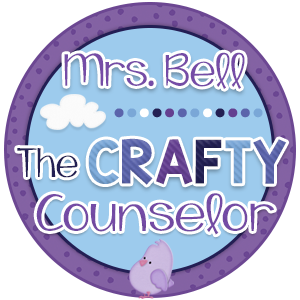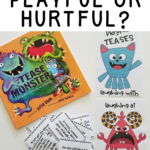Playful or Hurtful Tease? How to Tell the Difference
My students use the word bullying a little too loosely. They throw the word bullying around like it’s nothing without realizing the serious implications (and the amount of time and paperwork) that the word holds.
Often, what they really are describing is teasing.
It is hurtful nonetheless, but it does not meet the criteria for bullying.
I made it my mission to educate my kiddos on what it truly means to be a bully. I minimized the number of false bullying reports by explicitly teaching what it means to be a bully. My students learned the concept of playful vs. hurtful teasing and how hurtful teasing differs from bullying.
With my older students (grades three through five), I explicitly teach the differences between what is considered bullying and what is considered teasing. They are old enough to understand these concepts and benefit greatly from clear and concise explanations.
My Iittle ones (grades kindergarten through second) have difficulty understanding that not all teasing is meant to be mean or hurtful. They can get unnecessarily offended or upset by a tease that was meant to be playful.
Save time and paperwork with this lesson as it helps cut down on bullying claims and teaches students how to express themselves and better understand others.
Classroom Lesson
To further help students understand teasing and its relationship to bullying, I read the story Tease Monster by Julia Cook (click here to view my Amazon affiliate link).
It perfectly explains the relationship between teasing and bullying. Students are provided food for thought and opportunities to reflect on their behaviors and viewpoints.
Once we finish reading the story, I use chart paper or the whiteboard to have students compare friendly teasing, mean teasing, and bullying.
We make sure to focus on the key differences to show how these three terms differ significantly. Discussing the concepts and visually mapping the differences helps solidify student understanding.
Friendly/Mean Teasing Card Sort
After reading the story, discussing the content with the class, and answering any questions, I introduced the sorting game.
Students pick a card and read it aloud to the group one at a time. Next, they decide if what is written describes a hurtful or a playful tease. Students share their answers with the class.
Everyone gives a thumbs up if they agree and a thumbs down if they disagree. This is a great teaching moment to show how each situation affects people differently.
Something that hurts my feelings might not hurt your feelings. We must be careful with our words because we never know how they will affect someone else.
Once the student decides whether the tease is hurtful or playful, the student feeds it to the tease monster. We continue this process until all students have had a chance at a turn to share or we run out of cards/time in the lesson.
Feed the Tease Monsters
Students love the “monsters” that we use for this activity. I got these cute pencil cases from Amazon. Once students have decided if the tease is playful or hurtful, they “feed” the “monster” by dropping the situation card in its mouth.
When teaching the lesson, I hang the monsters from thumbtacks on the wall and let students drop the cards into the monster’s mouths. Students love how creative and interactive this activity becomes.
Laminate the situation cards so they can be easily sanitized and reused.
Calm Down Tools
I like these pencil cases so much because they double as a great calm-down tool. The pouches unzip all the way around and come completely unraveled, which is really unexpected. These pouches have saved me many times by stopping a kiddo mid-tantrum.
How do you teach kids the difference between hurtful teases and teases that are meant to be playful?
Leave your advice and suggestions in the comments below!
Download your own copy of my Tease Monster game, including posters and worksheets, here.
Check out other ways I’ve used this resource here.
Check out the Crafty Counselor Store or TpT for more ideas and resources!
Let’s Connect:
- Check out My TeachersPayTeachers Store
- Like Me on Facebook
- Follow Me on Instagram
- Pin Me on Pinterest
- Create With Me on Etsy
You May Also Like:
- Healthy Friendships Small Group Curriculum
- 6 Creative Ways to Get Kids Talking
- Calm Down Strategies Games
- Good Citizenship Skills and Activities
TpT Store Links:
Read more...
Share it...
You might also like...

Hi, I'm Ashley!
I am a school counselor who helps educators to change the lives of students with engaging, creative, and meaningful SEL resources.














